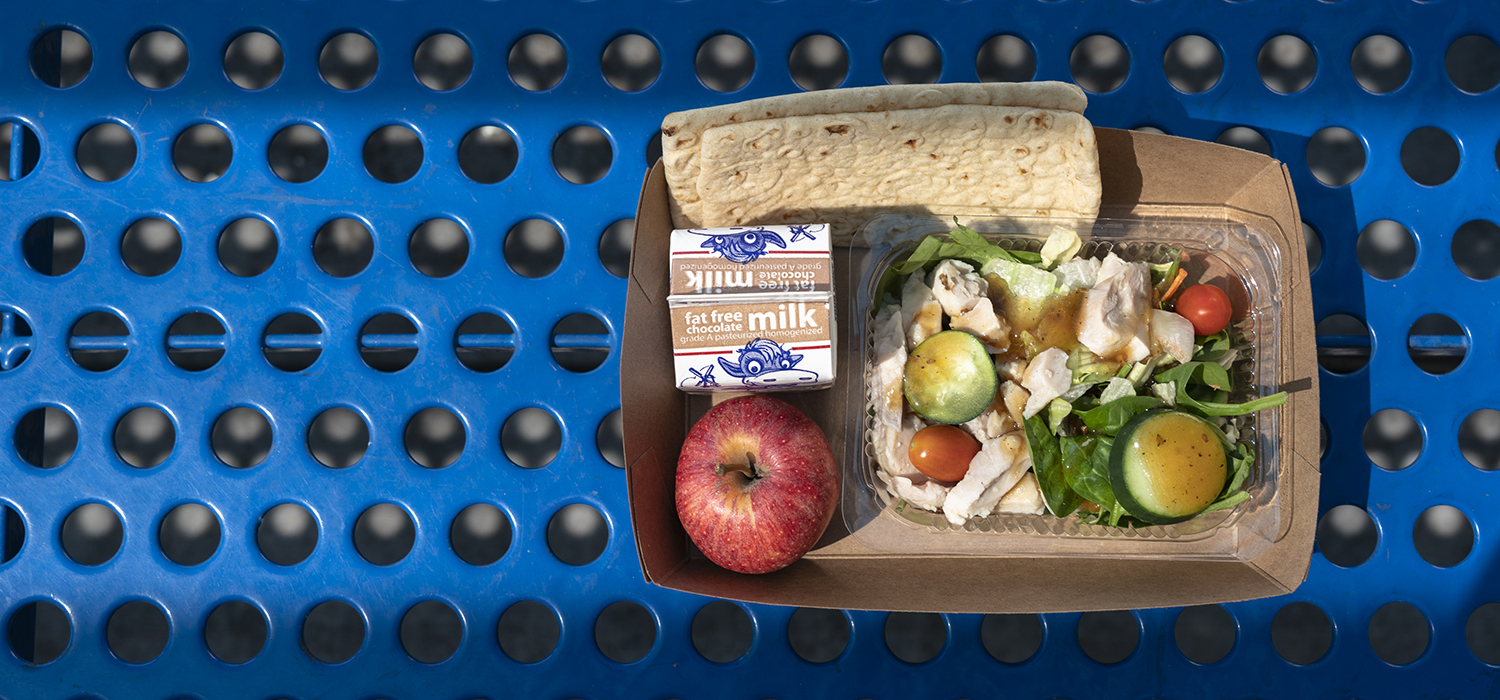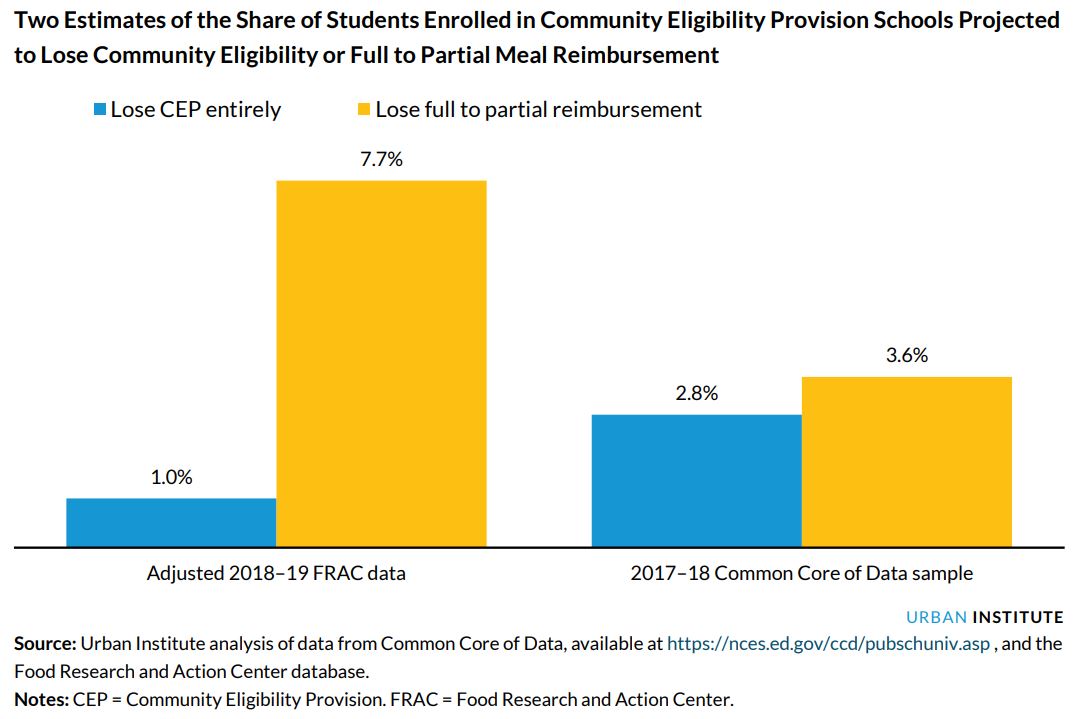
In an earlier blog post, I highlighted how changes to the Supplemental Nutrition Assistance Program (SNAP) could limit access to free school lunches, but at the time, we had little data on just how many children would be affected.
Now, Urban Institute researchers have run the numbers, and they show the consequences could be further reaching than initially estimated because of effects on schools that use the Community Eligibility Provision (CEP) to provide free lunch to all students. CEP, which has been linked to health (PDF), behavioral, and academic gains, relies on the number of students certified as free-lunch eligible through participation in SNAP or programs like it.
The administration has proposed restricting broad-based categorical eligibility, which gives states flexibility to expand access to SNAP by increasing income limits and removing or relaxing asset limits. As reported before, this change could affect an estimated 2 million people in families with children.
How SNAP affects free lunch
There are two ways losing SNAP benefits could result in the loss of free lunch.
First, students who are automatically certified as free-lunch eligible by virtue of their participation in SNAP could lose their eligibility if they don’t participate in certain other benefits programs. A US Department of Agriculture estimate shows that 982,000 students could lose their automatic eligibility for free lunch because of changes to SNAP. Of these students, about 45 percent are income eligible for free lunch and could recover their eligibility if their school returns to using paper forms for free lunch. (The other 55 percent would pay some or all of the cost of lunch.)
Second, students might also lose access to free lunch because of effects on CEP, which gives schools the option to provide free lunch to all students if at least 40 percent of students are identified as low income through participation in certain social safety net assistance programs. If more than 62.5 percent of students are verified as low income, the school gets fully reimbursed for the free lunches; schools where between 40.0 and 62.5 percent of students are certified as low income get partial reimbursement.
As students’ families lose eligibility for SNAP through the administration’s proposed policy changes, the percentage of students certified as low income in schools or districts using CEP could fall below these thresholds, jeopardizing the ability of these schools and districts to participate in the program or significantly reducing the funds they receive to cover the cost of meals.
Effects on students and schools
The data sources have limitations, but Urban researchers Kristin Blagg, Macy Rainer, and Elaine Waxman calculate that more than 7.7 percent of students at CEP schools, equivalent to about 1.05 million children, attend schools that could lose full reimbursement, costing those schools about $167 million. Another 142,000 students attend schools that could lose their CEP eligibility altogether.

Because even a small reduction in the share of free-lunch-eligible students can leave CEP schools that are not eligible for full reimbursement on the hook for more money, additional students could lose access to free lunch if their schools opt to eliminate the program in the face of increased costs.
Effects will vary by school and by state, as states approach both SNAP and CEP differently. But Urban’s analysis shows that changes to SNAP would have a broader impact on free school lunch than originally reported, affecting even students who don’t receive SNAP benefits.
Tune in and subscribe today.
The Urban Institute podcast, Evidence in Action, inspires changemakers to lead with evidence and act with equity. Cohosted by Urban President Sarah Rosen Wartell and Executive Vice President Kimberlyn Leary, every episode features in-depth discussions with experts and leaders on topics ranging from how to advance equity, to designing innovative solutions that achieve community impact, to what it means to practice evidence-based leadership.